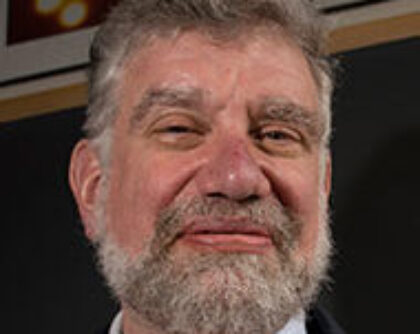Paul L. Schechter
Research Interests
Gravitational macro- and micro-lensing of active galactic nuclei and supernovae. Wavefront sensing for correcting gravitational and thermal deformations of telescope mirrors.
Biographical Sketch
Paul Schechter received his PhD in physics from the California Institute of Technology in 1975. He has held postdoctoral positions at the Institute for Advanced Study and the University of Arizona, faculty positions at Harvard and the Massachusetts Institute of Technology, and scientific staff positions at Kitt Peak National Observatory and the Carnegie Observatories. In addition to his work on gravitational lensing, he has worked on active optics
systems for a succession of telescopes.
Awards & Honors
- 2017 // Elected to American Academy of Arts and Sciences
- 2003 // Elected to U.S. National Academy of Sciences
- 2001 // Guggenheim Fellowship
Key Publications
-
Basic Elements of Strong Gravitational Lensing,” P.L. Schechter and J.D. Schnittman (2025) SpSciRev 221,49S
-
“What Makes Quadruply Lensed Quasars Quadruple?” R. Luhtaru, P.L. Schechter and K.M. de Soto (2021) Astrophys.J. 915, 4L
-
“A Calibration of the Stellar Mass Fundamental Plane at z=0 Using the Micro-lensing-induced Flux Ratio Anomalies of Macro-lensed Quasars,” P.L. Schechter, D. Pooley, J.A. Blackburne and J.K. Wambsganss (2014) Astrophys. J. 793 96S
-
“Generic Misalignment Aberration Patterns and the Subspace of Benign Misalignment,” P.L. Schechter and R. Sobel Levinson (2012) SPIE 8444E, 55S
-
“Quasar Microlensing at High Magnification and the Role of Dark Matter: Enhanced Fluctuations and Suppressed Saddle Points.”, P.L. Schechter and J.K. Wambsganss, (2002) Astrophys. J. 580, 685S.
